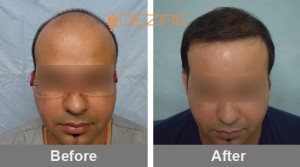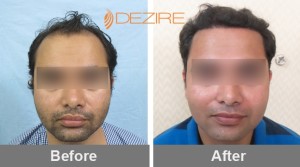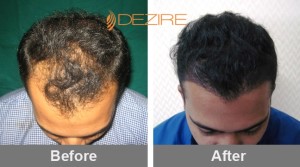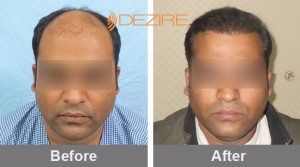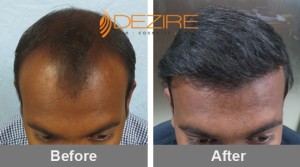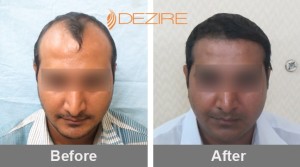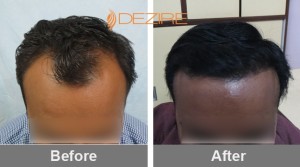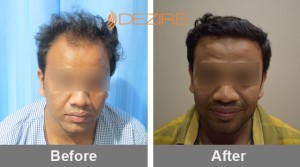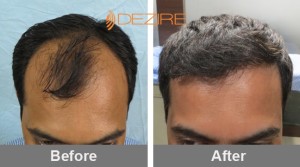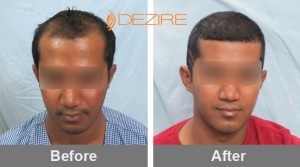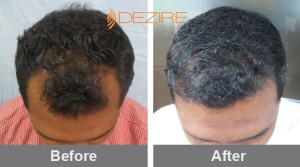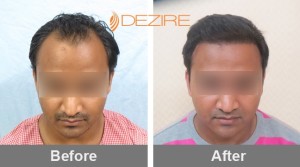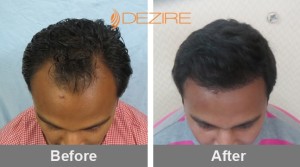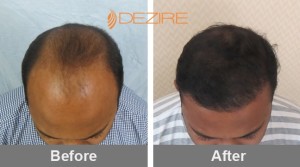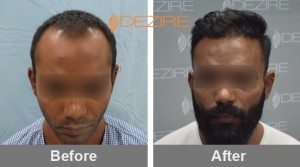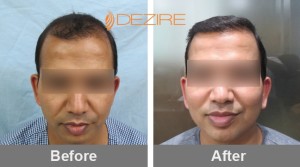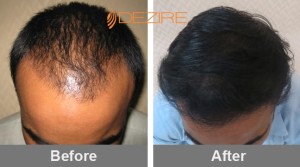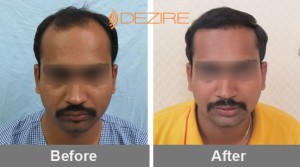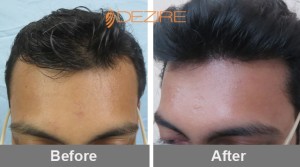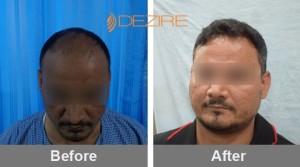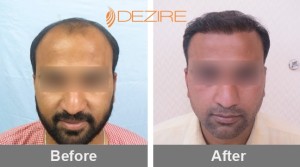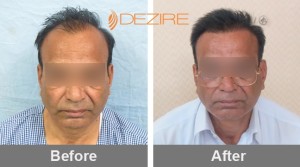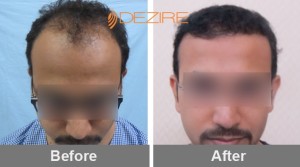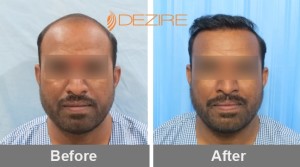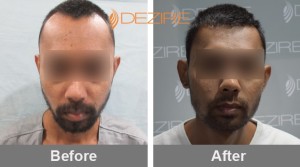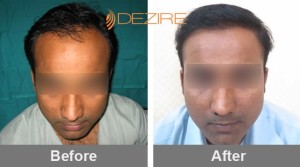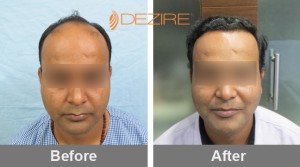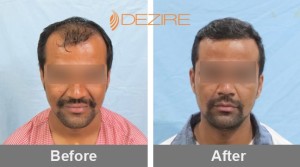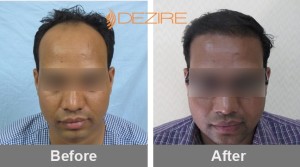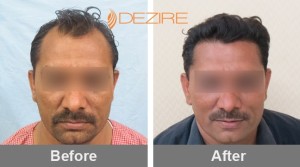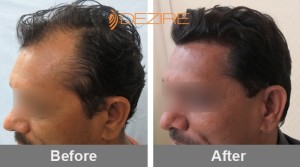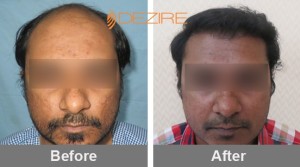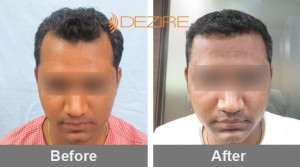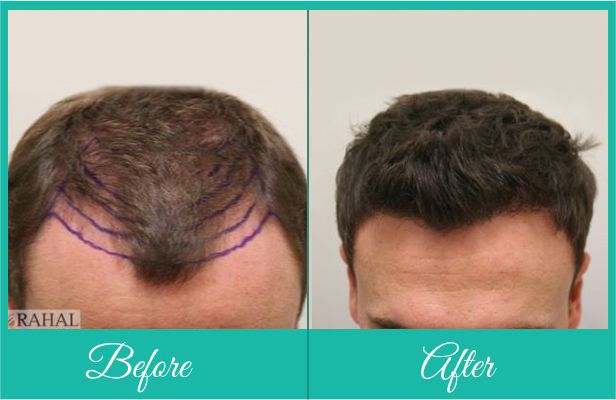
Front hairline transplant
Placement of Hairline
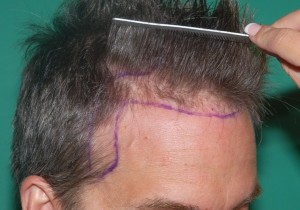
The hairline is often the most visible part of the completed hair transplant. Hairline requirements, however, differ from patient to patient. Some patients want a relatively low and dense hairline. Such a requirement is best met for patients who have less hair loss that has stabilized by itself, no family history of extensive hair loss and good availability of donor hair.
Art and Science behind the hairline design
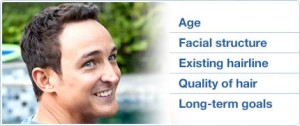
We are recognized for the ability to create extremely natural looking hairline restoration results for our patients. The hallmark of any hair transplant result is the artistic approach in creating the hairline which is undetectable but also natural. We evaluate several factors during your consultation to design a specific hair restoration plan for you, which are given below:
Hair Recession
Reconstructing a new hairline is a skill requiring surgical as well as artistic skill. It is critically important to one’s appearance that a hairline not only be age appropriate the day of the procedure, but look natural as he ages.There is a basic principle of hairline design. The hairline in most individuals starts at 1/2 the distance above the eyebrows, from the distance between the eyebrows and the chin.
Because donor hair is a finite resource that can be exhausted without proper hair restoration planning, our consultation always includes the possibility of future thinning behind and around the new hairline. Younger patients especially need the honest counseling of an experienced surgeon so that future happiness is not jeopardized by poor hair restoration surgery planning. A successful hair transplant requires that donor hair resources be used intelligently so as to provide the needed density for both present and future hair restoration needs. The hair implant is done not only to enhance appearance for today, but also to ensure long-term satisfaction with the new hair.
Frontal Hairline Design Concept
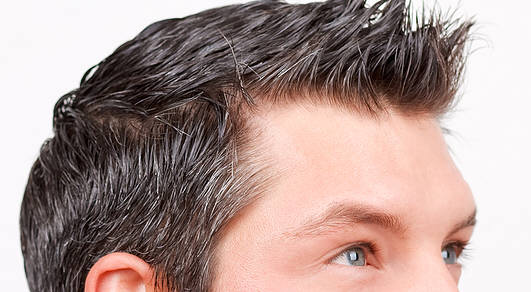
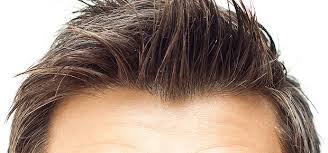
Anyone who has experienced permanent hair loss may be a candidate for hair restoration surgery, including:
- Hairline shape :An aesthetically appealing male hairline should be based upon a number of factors besides the age of the patient. The goal of cosmetic surgery -hair transplantation is cosmetic surgery, after all – is to improve the overall attractiveness of the patient. The shape of the face, forehead, and brow must be taken into consideration in order to make the hairline work for the individual. A cookie-cutter or mass-produced approach to hairline design often results in more hair, but an odd appearance. The secret to success is making a unique hairline. Proper facial framing with a new hairline will enhance the appearance by complementing the existing natural features. If the hairline is raised or lowered, thickened or thinned, soft or more abrupt, more or less curved, with or without a widow’s peak should depend upon the effect on the appearance as a whole. The goal should not just be restoration, but rather aesthetic improvement.
- The location of the hairline:If there were a Ten Commandments of hair line restoration placement, the first would be “thou shall not make the hairline too low”. A more conservative approach that fits the face tends to make a patient happy for decades to come.
- The transition between the hairline and the temples.
- The angle, direction and depth of the hair follicles.
- The creation of a natural and soft appearance along the front and sides.
- The safe integration of new hair between existing hair follicles.
- Graft implantation with imported planters coordinated to achieve hair density goals.
- Exquisite graft care via cooling, moisture and a “soft-touch” to maximize yield.
- Exclusive follicular unit grafting for an undetectable and natural result.
In the recent past, many hair transplant patients hid the frontal hairline because the surgeon placed grafts that looked unnaturally large and out-of-place. Follicular unit grafting gives the surgeon the needed tools for consistently producing hairlines that meet patient expectations. Follicular unit hairlines are regarded as ultra-natural with high density in appearance as compared to those of the past. - Future hair loss consideration: A common scenario occurs with balding men troubled by significant crown loss and the less obvious emergence of frontal loss. These patients present with crown thinning which is obvious to them, and mild thinning through the front and mid-scalp. Patients need to be counseled that they will be happy if the frontal hairline is properly framed and dense, with dense mid-scalp than a dense crown without frontal coverage. Because donor hairs are limited, future loss must be considered and made part of the long-term strategy so that the patient does not regret the decision to undergo hair transplantation.
Receding Hairline Treatment
If you’re noticing that your hairline is changing and going back, it’s time to get it corrected. Don’t wait for long to late stage of male pattern baldness. Instead, explore receding hairline treatment to reverse your hair line pattern. At Dezire Hair Transplant Center, we utilize the latest hair restoration treatment options for a hairline transplant, FUE technology.
The FUE Advantage
Many hair transplant options are available, but follicular unit extraction by SAFE system with our customized modification specially differs significantly from strip technique known as FUT. With FUT, a cut is made on the back of the scalp with a scalpel to remove a strip of scalp with roots for harvesting the hair follicles. This procedure involves pain, stitches, long healing time, and scarring. With FUE, the doctor does not use a scalpel, which means minimal pain, no stitches, no excessive healing time, and no telltale scarring. Fast recovery and early to resume work are some of the advantage of fue hair transplant
Hair Transplant Timeline
Our care procedure involves a specific hair transplant timeline that begins with your first consultation. During your consultation, you will speak with our experts to try to determine the cause of your hair loss. Once physical illness is ruled out and male pattern baldness is confirmed, you will receive recommendations for treatment options that can resolve your hair loss problem.
After the procedure, you will leave the clinic with covering the donor area. We don’t use scalpels, so no stitches are involved with any hairline hair transplant. Follow up visits by personal visit or emails/Skype, are scheduled next day, 14 day, 4th month, 6 month 9 month and 1 year. . It’s common for most patients to resume their normal activities within one to two days. You will notice tiny crusts which are known as scab forming at the transplant locations. Within 2 to 3 weeks, these crusts will loosen and fall off of your scalp. You should feel and look fully recovered within 14 days after the procedure.
Within two to three weeks of the transplant, the newly transplanted hair will fall out. This is entirely normal. The bulb of the hair will then remain dormant beneath the skin for up to 12 weeks. After this time, new hair will grow. You can expect full and mature hair growth in 6 to 9 month time.
The FUE Process
You will settle into a comfortable, reclining specially designed for fue procedure during your procedure. You
shouldn’t feel extreme pain during the procedure, and most patients report feeling minimal discomfort.
Hairline Restoration Cost
Our hair transplant is best in terms of result and at affordable cost. The average cost of FUE transplants depends on the number of graft required for particular grade of baldness






